Pro Tips
Testing thesify: How This AI Tool Saved My Undergrad Paper
Jan 17, 2025
AI Tools for Academic Writing: My Experience Testing thesify
Every student knows the struggle of revising a paper and wondering, “Is this the best it can be?” But what if there was a tool that didn’t just help you revise your essays, but also taught you how to write better? That’s where thesify comes in. More than just an editing tool, thesify offers targeted, actionable feedback that aligns with academic standards and encourages skill development.
To test how well thesify works, I revisited a sociology paper I wrote during my undergraduate studies—10 years ago, to be exact. Now, with a master’s degree in sociology, I have the experience to critically evaluate the feedback thesify provides. Could it identify areas where my paper fell short and offer practical suggestions for improvement? Could it teach me skills I wish I had learned back then? The answer is a definitive yes.
This blog explores thesify’s unique features and how it helps students improve their writing while preserving their voice and integrity. Whether you’re a university student, a researcher, or an academic curious about AI tools in education, read on to discover how thesify can transform the way you approach academic writing.
Entering Assignment Instructions: Making thesify Work for You
thesify’s ability to tailor its feedback starts with the details you provide about your assignment. For this sociology paper, I entered the original assignment prompt, which required analyzing how gender is “done” in a social setting using field observations. To add even more context, I included notes I’d found in an old email from my teaching assistant—proof that I haven’t exactly cleaned up my inbox thoroughly over the years!This input process was simple. After uploading my paper, I selected the field of study (“Sociology and Political Science”), specified the word count, and entered the assignment instructions. thesify used this information to deliver feedback that was relevant to the course’s focus on gender theory and academic analysis.
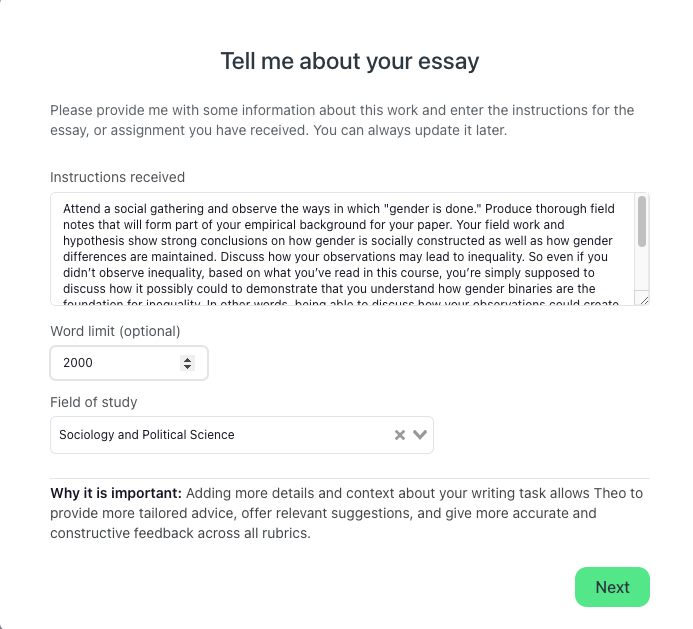
As a student, I didn’t realize how critical it was to fully engage with assignment instructions, especially when they came with additional clarifications like my TA’s email. In fact, failing to integrate these details likely contributed to areas where my paper fell short. If you’ve ever struggled to interpret an assignment, you might find Step-by-Step Academic Writing Guide: Breaking Down Every Task for a Successful Final Draft helpful—it’s a resource that pairs perfectly with thesify.
Validating Strengths and Addressing Weaknesses: How thesify Matches Professor Feedback
Once the setup was complete, thesify analyzed my paper and delivered an initial breakdown of its strengths and weaknesses. Among the strengths, it highlighted:My detailed observations of how gender was performed in a rave setting.The integration of sociological theories from course readings.It was validating to see these strengths recognized, especially since these were areas my professor also praised when grading the paper. Seeing this consistency reassured me that thesify’s feedback aligns closely with real academic expectations.
However, thesify also identified weaknesses, such as:
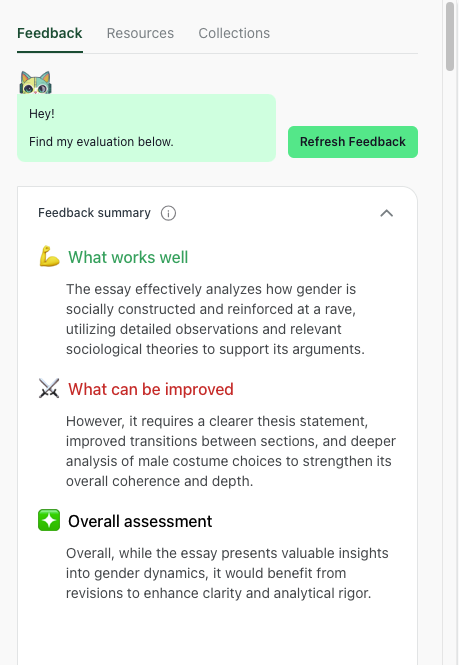
Transitions between sections that were unclear.Limited depth in my analysis of male costume choices and their implications for gender performance.
This balance between positive reinforcement and constructive criticism made the feedback actionable and easy to prioritize. For students revising their work, this mix of validation and actionable guidance eliminates guesswork and makes the revision process less daunting. For further insights on how to turn feedback into stronger essays, check out Rewriting the Story: How Feedback Turns Good Essays Into Great Ones.
Strengthening the Core: The Thesis Statement
One of thesify’s most impactful critiques was about my thesis statement—or, more accurately, my lack of a clear one. As an undergrad, I didn’t fully grasp the role of a thesis, especially in shorter assignments like this essay. I thought the observations in my paper could stand on their own, but thesify showed me otherwise. It explained that a strong thesis isn’t just important in long research papers—it’s the foundation for any academic argument.
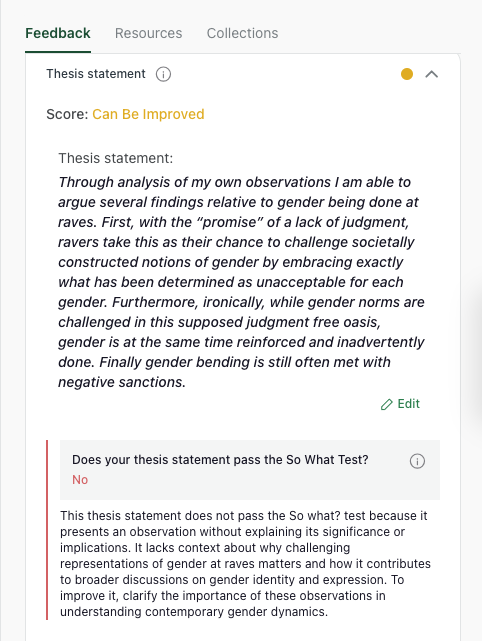
What impressed me most was how specific thesify’s feedback was to my essay. It didn’t just tell me my thesis was weak—it pinpointed exactly where it fell short and explained why. For example:
It highlighted that my thesis failed to articulate the significance of my observations of gender performance at a rave.
It suggested framing my argument in terms of broader sociological discussions, like inequality and societal norms.
It provided clear guidance on how to rephrase my thesis to directly answer the assignment prompt.
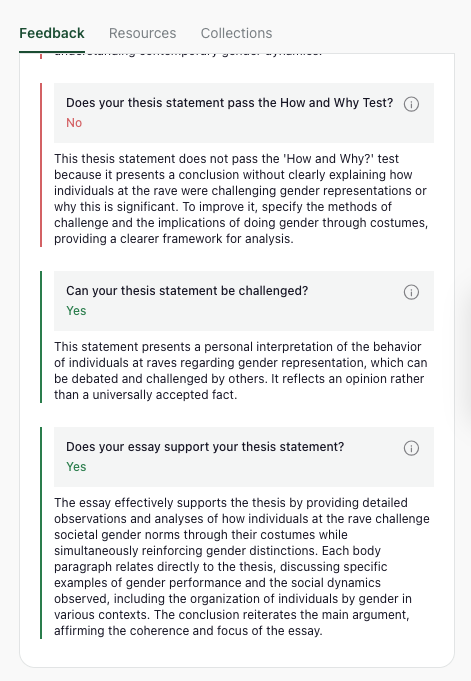
This helped me finally understand that even in a short paper, a strong thesis is what ties everything together and gives your argument purpose. For students struggling with this critical skill, thesify offers a clear and structured approach to writing better theses. To explore more tips on thesis writing, check out The Basics of Thesis Writing: How to Develop a Strong Thesis Statement.
Using thesify’s Resource Tool to Find Academic Sources
One of thesify’s features I definitely wish I had access in college is its resource tool, which helps you find academic sources and empirical evidence directly related to the ideas already in your draft. While revisiting my paper, I highlighted the phrase “fashion as an identificatory gender display” and instantly received a curated list of articles, books, and journals that explored this concept in depth.

This feature stands out for its precision. The recommendations weren’t generic—they aligned with the specific arguments and concepts in my essay. For example, thesify suggested resources that expanded on the theoretical ideas I had referenced while also offering empirical studies on gender and fashion. This combination of theoretical and data-driven sources made it easier to envision how I could deepen my analysis.
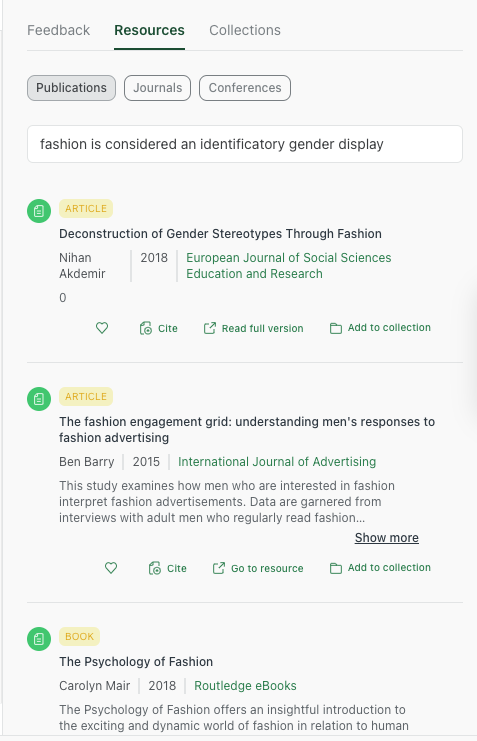
Having access to curated academic materials like this is invaluable for students working on essays that require both critical thinking and evidence-based arguments. It ensures your writing is not only well-supported but also rooted in credible, topic-specific research. For tips on how to integrate sources and examples effectively into your essays, check out 3 Tips for Effectively Using Examples in Academic Writing.
thesify’s Ethical Feedback: Guiding Without Rewriting
When I tested thesify with my bachelor’s assignment, I noticed that it didn’t just tell me what to fix—it asked thoughtful, targeted questions that encouraged me to think critically about my work. These were the kinds of questions I’d expect from a professor, and they pushed me to evaluate my arguments and structure more carefully.
For example:
When it flagged vague transitions, thesify asked how my ideas connected to the broader argument, prompting me to consider how to improve the flow of my essay.
When it pointed out gaps in evidence, it suggested including counterarguments and posed questions about how additional sources could strengthen my claims.
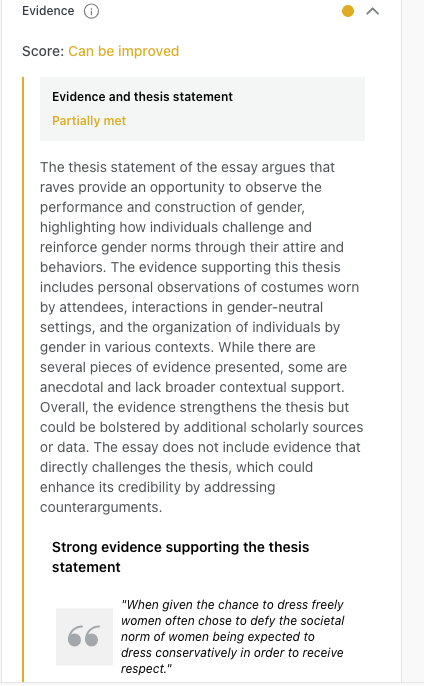
This approach made thesify feel like an interactive tool for academic growth rather than a shortcut or content generator. Its feedback mirrored what a professor might offer while respecting the integrity of my original work.
If you’re interested in responsible and ethical AI use in academic writing, check out 9 Tips for Using AI for Academic Writing (Without Cheating).
What I Learned From Testing thesify’s Feedback
Testing thesify on my college essay revealed specific ways its feedback would have improved my work and how it can help other students tackle similar challenges. Here’s what stood out from the feedback I received:
Spotlighting Key Issues: thesify highlighted where I made broad claims about gender performance without fully tying them back to the assignment prompt. It flagged these gaps and encouraged me to connect each observation to the core question, helping me see how critical this step is for a cohesive argument.
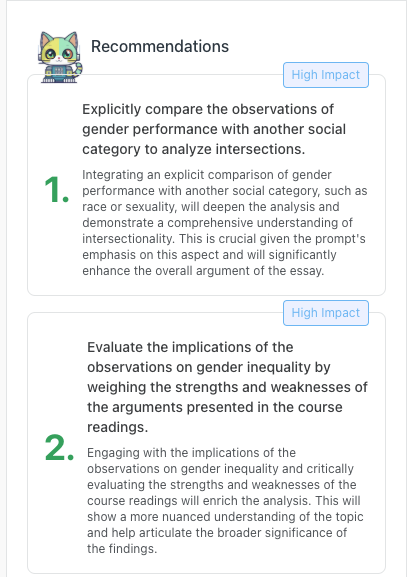
Improving Clarity in Analysis: One of thesify’s critiques focused on my analysis of costume choices at the rave. It noted that my argument was underdeveloped and suggested exploring how these costumes reinforced or challenged gender norms. This would have helped me build a more thoughtful and detailed analysis as a student.
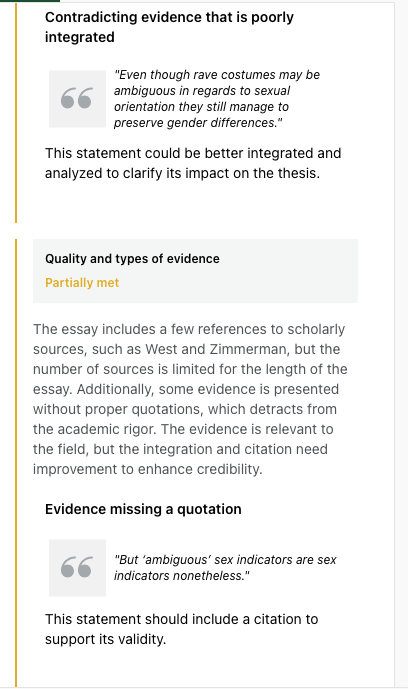
This feedback was not just relevant—it felt like a personalized roadmap for improving my essay. For students, thesify offers guidance that doesn’t just point out what’s wrong but helps you understand how to fix it.
Is thesify the Academic Tool Students Have Been Waiting For?
After testing thesify on my university essay, one thing became clear: it’s not just another AI tool—it’s a resource that bridges the gap between vague professor feedback and the actionable guidance students need. The feedback I received was specific to my essay, relevant to my academic field, and designed to help me think critically about my writing, not just fix mistakes.
What stood out most was how thesify didn’t overwhelm me with generic advice. Instead, it posed thoughtful questions that mirrored what professors would ask, pointed out areas for deeper analysis, and provided clear steps to strengthen weak points in my essay. For a student, this kind of support can make the difference between feeling stuck and actually learning how to improve.
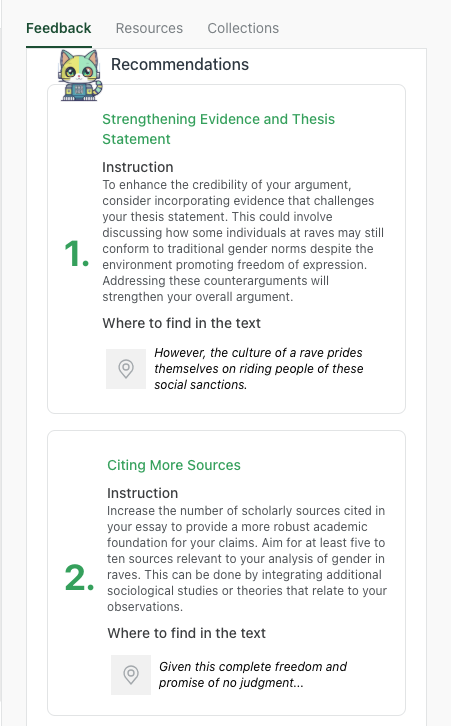
While no tool can replace the insights of a professor or teaching assistant, thesify offers something unique: consistent, accessible feedback that feels personal and tailored. If I’d had it as an undergrad, I’m confident it would have saved me time, improved my grades, and taught me skills I’ve only fully appreciated years later.Whether you’re revising a thesis, drafting your first essay, or somewhere in between, thesify provides the kind of support students wish they had from day one.
